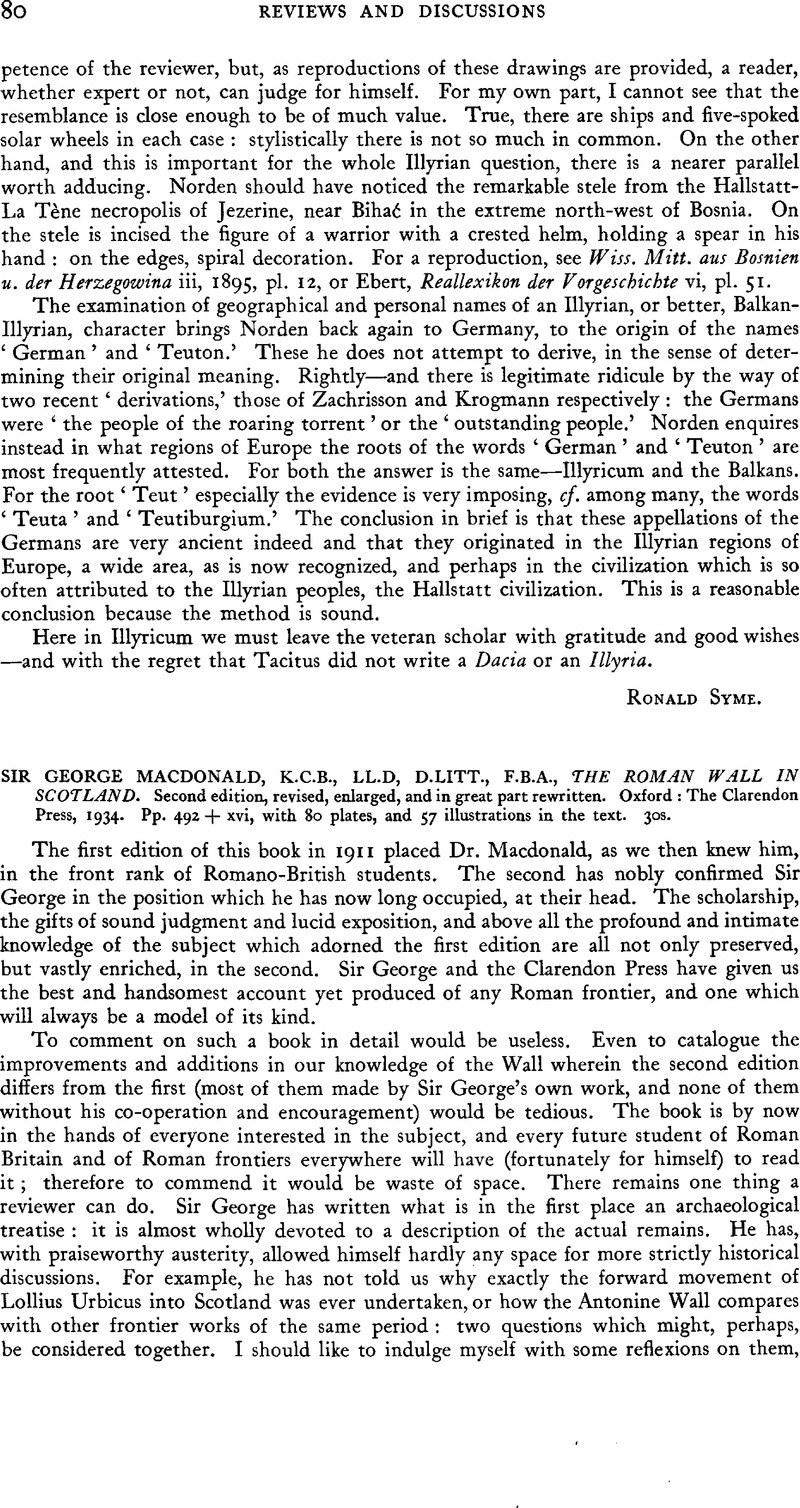No CrossRef data available.
Published online by Cambridge University Press: 24 September 2012

1 The sectional areas will not be exactly proportional to the squares of the widths, because the six-foot parapet-walk will no doubt be constant for all profiles. But the sectional area of Hadrian's turf wall would be about 160 square feet, that of the Antonine, if the same slopes were adopted, about 80.
2 The relative poverty of the Antonine Wall forts in pottery and small finds cannot be wholly due to cleaning-up at the final evacuation, for it affects all three periods.
3 The grounds to which I refer are: (a) Professor Childe's dating of a sample site to that period [Antiqs. xiii, p. 8); (b) the distribution of such sites on the map, which strongly suggests their fortification after the creation of the Tyne-Solway frontier. It has been suggested to me that many of them are not forts proper but cattle-kraals, Perhaps; but many are genuine forts.
4 We have, I think, no evidence as to whether the Romans foresaw this recovery and, if so, how they meant to deal with it.